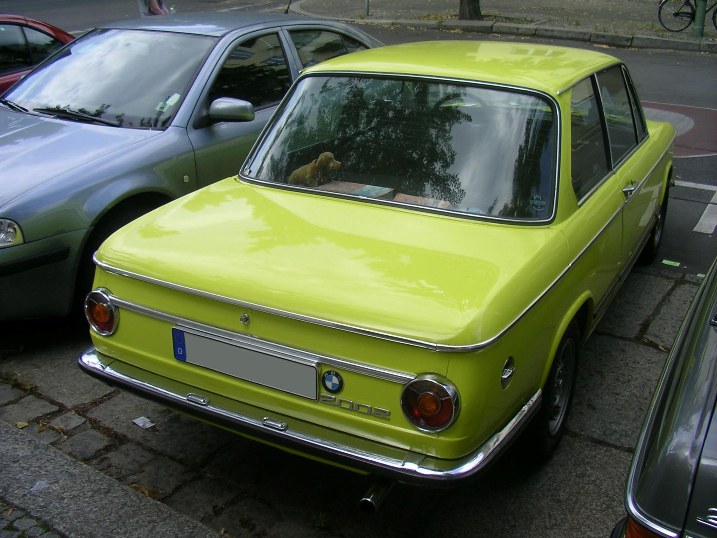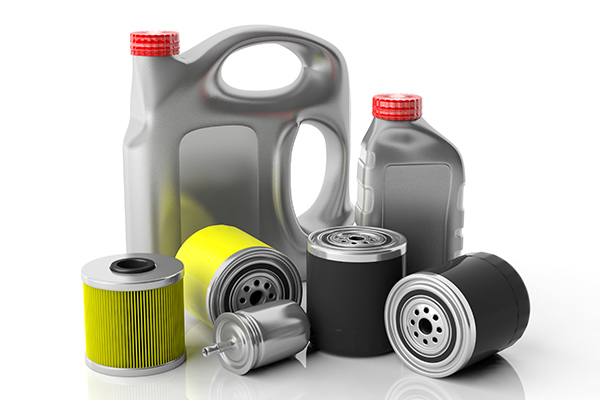During the late 1960s, American performance cars that could seat four or five adults comfortably were big, heavy, and fast. We're talking midsize coupes like the Pontiac GTO, Chevelle SS, Plymouth GTX, and Ford Torino GT. Sure, there were the smaller, so-called "compacts" like the Chevy Nova SS, Ford Falcon Sprint, and Dodge Dart GT, but like their bigger brothers, they were more about blasting up through the gears in a straight line than carving up a tightly curved mountain road.

1972 BMW 2002 NY
More agility, less acceleration
Yet on the other hand—and on the other side of the Atlantic—you had a certain boxy and unassuming German two-door sedan that could seat four adults comfortably and whose idea of performance was quite different from that of the Americans. Introduced for 1968 and based on the BMW 1602 (which debuted a few years earlier), the 2002 combined its sibling's compact but space-efficient body and agile handling with a bigger (2.0-liter versus 1.6-liter) four-cylinder engine.
There was just 100 horsepower on tap, so the Bimmer obviously lacked ripping acceleration. But a finely tuned, fully independent suspension system along with communicative steering and a curb weight of only around 2,100 pounds meant that a 2002 could quickly make tracks on a serpentine road. A blacktop scenario that would leave those American muscle cars falling all over themselves.
The two-door sport sedan
Yes, we called the BMW 2002 a sedan, which may seem odd given it has only two doors. While the American market typically defines a car with four doors as a sedan and one with two doors as a coupe, the Europeans define a sedan as a "three box-style" (hood, passenger compartment, trunk) automobile, saving the "coupe" designation for a two-door with sleeker body styling.
With the introduction of the BMW 2002, the sport sedan—a compact, boxy, practical car that could seat four or five adults while providing entertaining and athletic performance—was born. Indeed, the 2002 was a new type of car, one that could embarrass sports cars on a twisty road while also serving as a comfortable family and commuter car.
In a road test of the 1970 BMW 2002, Car and Driver stated: "Forget about the sedan body and pretend that it's a sports car—a transformation that's almost automatic in your mind anyway after you've driven it a mile or two. With the possible exception of the new Datsun 240Z (which is not yet available for testing), the BMW will run the wheels off any of the under-$4000 sports cars without half trying. It is more powerful and it handles better."

1972 BMW 2002
Fuel injection makes a buffer Bimmer
Some U.S. market enthusiasts still wished for more power under the 2002's hood. Although Europe got to enjoy the step-up "ti" model with its stronger engine, it didn't make it to American shores. And neither did a turbocharged 2002 that was produced later on. But those drivers' wishes came true for 1972, when BMW introduced a more powerful version of the 2002 called the 2002 tii that was available in the states.
With mechanical fuel injection (replacing carburetion), higher compression and other engine tweaks, the 2002 tii made 140 horsepower. With 40 percent more power than the base 2002, the tii was noticeably quicker, running the 0-to-60 dash in about 9.5 seconds versus about 11 seconds for the standard 2002. Other upgrades for the tii that boosted overall performance included a beefed-up suspension, bigger brakes and a less-restrictive exhaust. Inside the car, a leather-wrapped steering wheel greeted the lucky driver.

1975 BMW 2002
From Roundies to Squaries
From 1968 through 1973, the BMW 2002 continued essentially unchanged as far as body styling. These vehicles are known as "Roundies," so-called because of their simple round taillights. Those years also featured smaller, more elegant bumpers. For 1974, the slim chrome bumpers were replaced by what looked like hydraulic shock-mounted aluminum battering rams that jutted out from the car on either end.
These unfortunate blemishes were an answer to the 5-mph impact standard that took place in the States the year prior, meaning a bumper had to absorb a 5 mph hit without damage. That year also saw the taillights updated to square (actually slightly rectangular) units that seemed to tie in better to the car's body shape than the Roundies. Second generation "Squaries" continued through 1976, which would be the model's last year.

1971 BMW 2002 interior
The die has been cast
The 320i replaced the 2002 in 1977, and thus the iconic "3 Series" was born. Given its rare combination of a fun-to-drive personality and everyday practicality, the 2002 served the company, and legions of driving enthusiasts, very well.
Did you own a 2002 or just dream of driving one? Tell us what you love about the 2002 in the comments.








